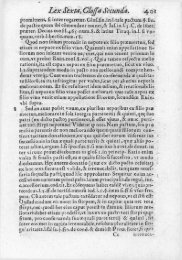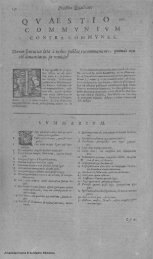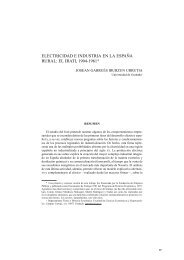Land tenure inequality, harvests, and rural conflict ... - e-Archivo
Land tenure inequality, harvests, and rural conflict ... - e-Archivo
Land tenure inequality, harvests, and rural conflict ... - e-Archivo
Create successful ePaper yourself
Turn your PDF publications into a flip-book with our unique Google optimized e-Paper software.
adical republicanism <strong>and</strong> did not elect Socialist mayors. Clusters of agrarian<br />
development <strong>and</strong> thick labor markets explain the vitality of protest, part of a large<br />
change in expectations <strong>and</strong> in bargaining power. The testimonies of several prefects<br />
of the period show that despite the occasional bouts of repression against anarchosyndicalist<br />
leaders, central authorities until June 1934 favored collective bargaining.<br />
State support to collective bargaining led to a wave of strikes, which was not<br />
correlated with any possible proxy of living st<strong>and</strong>ards, specialization or variation in<br />
income. Workers in some towns protested more possibly because they had a longer<br />
experience of strategic interaction with authorities. State intervention to stem riots <strong>and</strong><br />
rebellions in the large agro-towns of the South Spain had been going on since 19 th<br />
century <strong>and</strong> it had been a natural step to negotiate working conditions with provincial<br />
prefects or the Ministry of Labor. Most of this protest clustered in well-integrated <strong>and</strong><br />
fast-growing towns in which various social groups competed for rents from<br />
agricultural development.<br />
The results found here perhaps erradicate several myths about social relations<br />
in Andalusia in the 1930s. Seasonal unemployment was a characteristic of <strong>rural</strong> labor<br />
markets in cereal growing areas of Spain, not a new phenomenon in the 1930s.<br />
Poverty <strong>and</strong> living st<strong>and</strong>ards were dismal in the 1930s, but the situation did not<br />
deteriorate markedly in the early 1930s due to bad <strong>harvests</strong> or employers’ sabotage.<br />
There was a profound change in social relations <strong>and</strong> in the governance of <strong>rural</strong> labor<br />
markets, but nothing equivalent to a “latent” civil war caused by unemployment,<br />
<strong>inequality</strong> <strong>and</strong> exploitation. In fact, violence, boycott <strong>and</strong> sabotage would be<br />
incompatible with the very abundant <strong>harvests</strong> of 1932 <strong>and</strong> 1934. Perhaps, only the<br />
fundamental political regime change of April 1931, pro-labor legislative change, <strong>and</strong><br />
39
















